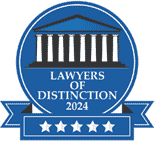Oswego Estate Planning Lawyer: Providing Financial Peace of Mind and Protection of One’s Assets

Estate planning is an important aspect of financial planning that involves arranging for the management and distribution of your assets in the event of your death or incapacitation. By creating an estate plan, you can ensure that your wishes are conducted and that your loved ones are provided for after you are gone.
Key Elements of Estate Planning
There are several key elements to estate planning, including creating a will, setting up trusts, and making plans for healthcare and end-of-life decisions. By taking the time to understand these concepts and create a plan, you can provide peace of mind for yourself and your loved ones.
What is a will?
A will is a legal instrument that describes your assets, distributes your assets, and appoints an executor to follow your wishes after your death. In your will, you specify who you want to inherit your property, who you want to function as the executor of your estate, and who you want to be the guardian of your minor children. A will takes effect after your death.
Creating a will is a major step in estate planning, as it allows you to have control over what happens to your assets after you are gone. Without a will, your assets will be distributed according to state laws, which may not align with your wishes.
What are trusts?
A trust is a legal arrangement in which a person or institution (the trustee) holds and manages the property on behalf of another person (the beneficiary). There are distinct types of trusts including the following:
-
Revocable Living Trust
-
Irrevocable Trust
-
Life Insurance Trust
-
Medicaid Trust
-
Asset Protection Trust
-
Special Needs Trust
-
Testamentary Trust
-
Real Estate Land Trust
Using trusts in estate planning avoids probate, which is a process where the court determines your wishes. The probate court will determine who shall inherit your assets while appointing a person or entity to administer your will. Transferring assets to your trust empowers you. Your trust gives you control by specifying your wishes. Trusts are a tool for estate tax savings and asset preservation. Trusts minimize estate taxes and maximize family wealth by minimizing family conflicts and vulnerabilities. A reduction in family conflicts and vulnerabilities increases retirement security and well-being.
By changing asset ownership to a trust, your trust agreement honors your wishes. Your trust agreement instructs family members of your intentions. Trusts are distributed outside of court because the assets are titled in the trust's name. Titling assets in the trust's name are distributed according to the trust agreement. Trust can also be used for tax planning and to protect your assets from creditors.
What is Asset Protection Planning?
Asset protection planning is a legal strategy used by individuals and businesses to protect their assets from potential lawsuits, creditors, and other threats. Asset protection involves organizing one’s assets to make them less vulnerable to seizure or loss, while still allowing for their use and enjoyment.
There are key components to effective asset protection. The first component is the use of legal structures, such as trusts, limited liability companies, and land trusts to hold and manage assets. These structures separate an individual's assets from their business assets, by reducing their exposure to major losses. A critical component of asset protection is using strategies to isolate losses to the property interest belonging to that asset. Asset protection is like virus protection for computers. Each computer has its’ own anti-virus software, so the virus is contained to one computer versus spreading to outside computers.
Diversification of assets is an essential component of asset protection. By spreading assets across multiple accounts, investments, and other holdings, an individual or business can reduce its liability exposure. One method of liability reduction is the use of holding and subsidiary organizations and entities, which segregate and limit liability concerns.
What are healthcare and end-of-life decisions?
In addition to making plans for the distribution of your assets, estate planning also involves making decisions about your healthcare and end-of-life care. Advanced directives such as a living will, or healthcare power of attorney specify the medical treatments you do or do not want to receive if you become incapacitated.
Open and honest conversations with your loved ones about your healthcare and end-of-life wishes are important. These concerns lead to family members understanding your preferences and priorities. These discussions make it easier for your agent to make the end of life decisions on your behalf by understanding your wishes and concerns.
Yorkville Estate Planning Attorney: Building Wealth and Peace of Mind One Customer at a Time
Estate planning is an important aspect of financial planning that involves arranging for the management and distribution of your assets in the event of your death or incapacitation. By creating a will, setting up trusts, and making plans for healthcare and end-of-life care, you can ensure that your wishes are conducted and that your loved ones are provided for after you are gone. By taking the time to understand these concepts and create a plan, you can provide peace of mind for yourself and your loved ones. Call Peace of Mind Asset Protection at 630-882-2467 or contact us through the contact form.
Questions?
Contact Us Today
Call 630-780-1034 or fill out the form below to set up a free consultation today:
The use of the Internet or this form for communication with the firm or any individual member of the firm does not establish an attorney-client relationship. Confidential or time-sensitive information should not be sent through this form.
I have read and understand the Disclaimer and Privacy Policy.













